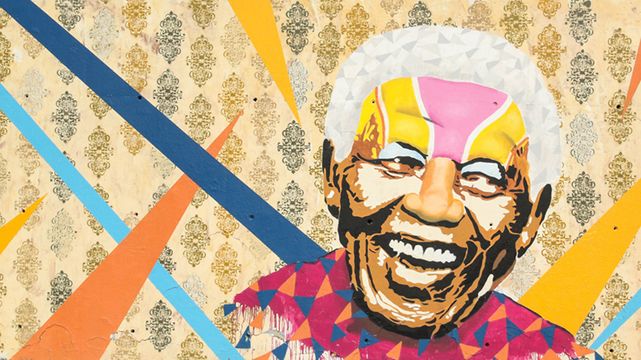SUMMARY
This is AI generated summarization, which may have errors. For context, always refer to the full article.

JOHANNESBURG, South Africa – After the initial shock of Nelson Mandela’s death, many South Africans celebrated his life and legacy with song and dance – a fitting tribute to a man whom music helped set free.
Mandela is now a household name, hailed across the world for unifying his country with a message of reconciliation despite spending 27 years in an apartheid prison.
But it was not always so. In the 1980s, about two decades into his imprisonment, the white-minority government had largely succeeded in putting him out of the minds of most people outside South Africa.
When he was mentioned by international news media, he was often referred to as a “jailed black terrorist leader”.
The international music scene however ensured that Mandela’s struggle against racist rule did not go forgotten.
South African artists in exile, luminaries like Miriam Makeba and Hugh Masekela, aided by American Harry Belafonte, spent their lives educating fans about the harsh realities of life under the apartheid government.
Then in 1984, British ska band The Special AKA released “Free Nelson Mandela,” an upbeat but unapologetically political song that remains one of the best-known protest songs in the world.
The song turned the call for Mandela’s release from a mere protest into a message of hope and proved to be a tipping point that transformed him into a pop culture cause celebre.
The next year came “Sun City,” a “We are the world”-style track spearheaded by Steven Van Zandt of Bruce Springsteen’s E Street Band.
Springsteen, Miles Davis, Bob Dylan, Bonnie Raitt, Run DMC and many others joined the song vowing not to perform in the South African resort of Sun City, located two hours from Johannesburg in an apartheid-created “homeland” for blacks.
In the years that followed, artists around the world released tribute after tribute in every pop genre, from Youssou N’Dour and Santana to Public Enemy and Tracy Chapman.
‘Music was a Trojan horse taking over the airwaves’
Those successes helped inspire producer Tony Hollingsworth to make a bigger gambit to mark Mandela’s 70th birthday in 1988 with a “Birthday Tribute” at London’s Wembley Stadium. (READ: 1988 concert for Mandela helped set him free)
“People can’t imagine that, but in 1988, people didn’t know much about Mandela in any meaningful sense,” he told Agence France-Presse.
“Nobody knew what he looked like, what he sounded like. We ran the whole campaign on a photograph that was 25 years out of date.”
He approached Trevor Huddleston, the Anglican Archbishop who then headed the Anti-Apartheid Movement of overseas activists, and proposed the concert as a way to change the world’s perceptions of Mandela.
The African National Congress had by then made Mandela’s release a centerpiece demand of the struggle, but he was still often described in news reports as a terrorist.
By getting the entertainment divisions of broadcasters interested in a tribute concert – one in which no politicians were invited onstage, Hollingsworth believed that the same networks’ news divisions would be forced to soften their language.
“I mean, it was a live event, I knew what was going to happen,” he said.
The artists delivered, taking to stage and repeatedly denouncing the white government and demanding Mandela’s freedom.
Here is Tracy Chapman performing ‘Talking ’bout a Revolution’ in the 1988 concert for Mandela:
“Music in that sense was a Trojan horse to take over the airwaves for 11.5 hours, in 100 countries, and to get that message out across the world,” said Hollingsworth.
“Free Nelson Mandela was the message in one sense, but it was also a moment when the entire world came together for a humanitarian cause,” he added.
More than 600 million people watched the gig, which included performances by Stevie Wonder, Sting, Whitney Houston, Peter Gabriel, and a who’s who roster of 80’s pop.
Those concerts helped sustain public support for sanctions on South Africa. When Mandela was finally released in 1990, Hollingsworth organised another mega-event in London to celebrate the triumph.
Taking the stage then, Mandela greeted the crowd with thanks.
“We thank you, especially for what you did to mark our 70th birthday. What you did then made it possible for us all to do what we are doing here today.” – Rappler.com
Add a comment
How does this make you feel?
There are no comments yet. Add your comment to start the conversation.